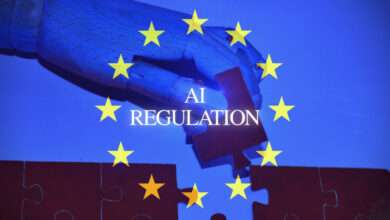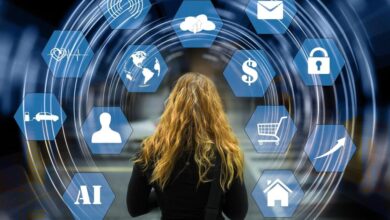We must educate everyone about the dangers of AI

What is reality?
No, I’m not getting all deep and philosophical.
I’m talking about artificial intelligence, or AI, which allows computers or computer-controlled machines to manipulate reality by “thinking,” learning, analyzing and creating like us humans. AI can generate voices, photos and texts so real-looking, you can’t tell the difference between what’s real and what’s computer-generated.
How real can artificial intelligence seem?
Pop star Katy Perry’s mom recently texted her daughter to tell her what a “gorgeous” white gown Perry wore to the Met Gala at the Metropolitan Museum of Art. Just one problem. Perry wasn’t at the Met Gala. The photo Perry’s mom saw was generated by AI. And so were photos of Rihanna and Selena Gomez at the Met — neither of whom was there.
A.I. has also been used to generate fake nude photos of Taylor Swift.
It created a fake voice of President Biden falsely telling New Hampshire voters in a robo call not to vote for him in the state’s primary because they then wouldn’t be able to vote for him in November.
Former President Trump, when confronted with real recordings of gaffes like mispronouncing words and confusing Hillary Clinton with Barack Obama tried to blame AI.
Some newspapers have even used AI to write news articles (but not this column).
And of course, scores of companies — from Amazon to Zillow — use artificial intelligence to answer customer questions through computerized voices and written responses.
Scammers have also employed fake artificial intelligence voices to sound just like loved ones who call relatives and ask for money or personal information because they say they’ve been arrested or were in accidents.
Of course, there are plenty of important benefits from AI. Robots using artificial intelligence can efficiently perform mindless repetitive tasks. Scientists can analyze reams of data in seconds. Doctors can detect patterns or trends that can help them analyze a person’s health. And businesses can use AI to determine the needs of customers.
More:Sophia the AI robot gives commencement speech at New York college. Some grads weren’t so pleased.
But what about the challenges of AI for kids who grow up in a world of artificial intelligence?
This is relatively uncharted territory.
Kids already are relying on computers to do basic tasks like spelling, math and grammar. Because of computerized technology, they no longer need to learn script writing or find information in books – as opposed to looking online for anything.
But with AI, a child can also have a computer write a paper or take a test for him. He could create an AI-generated image to illustrate that paper. And speaking of education, a cash-strapped school district or college might even be able to replace a teacher with an AI lecturer who can not only provide information, but answer questions.
Then there’s the non-academic stuff a kid could do with AI — like create fake images of classmates — or teachers — in embarrassing positions. Kids are already using AI to create phony nude images of classmates.
I don’t pretend to know how to create all of the guardrails to prevent artificial intelligence from causing even more momentous problems in everything from our personal lives to politics — although a new, very tentative and sketchy roadmap for AI regulation from a bipartisan group of U.S. senators tries to take a first step. But I do know we have to start trying to educate everyone — particularly children — about the dangers of AI and how, if possible, to tell what’s real and what’s not.
If we don’t, we’ll all be spending the rest of our lives asking a question we shouldn’t have to ask:
What is reality?



